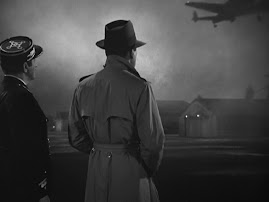UNIVERSAL TORAH: VAYAKHEL & PEKUDEY
By Rabbi Avraham Greenbaum
(Special additional reading for Shabbat HACHODESH: Exodus 12:1-20 giving the laws of the month of Nissan, "Ha-Chodesh", and the festival of Passover in preparation for the coming season of our Redemption. Special Haftara from Ezekiel 45:17-46:18 about the inauguration of the Future Temple.)
VAYAKHEL: Exodus 35:1-38:20,
GATHERING OF THE PEOPLE
The parshah of VAYAKHEL opens with the words: "And Moses gathered together all the Community of Israel." (Exodus 35:1). According to our sages, Moses' gathering of all of the Community took place on the day following Yom Kippur, when he had secured atonement for the sin of the golden calf.
This gathering consisted of all of ADAS YISRAEL, the Community of Israel. The Zohar (beginning of VAYAKHEL) states specifically that this Community was made up of all who remained faithful to the true Covenant of Israel, accepting no deviation from the Torah and no prophet other than Moses. The Zohar emphasizes that they could only build the Sanctuary after being purged of all the Mixed Multitude who went astray after the golden calf, which was half ox (Edom, Christianity) and half donkey (Ishmael, Islam). Both deviated from the finality of the Torah and the supremacy of Moses as G-d's true prophet, seeking to displace them in different ways by erecting new prophets and intermediaries standing between man and G-d. They and all the nations are excluded from membership of ADAS ISRAEL and from contributing to the Sanctuary.
The materials and manpower for the construction of the Sanctuary for the One G-d were to be contributed only by this Community of true Israelites, those willing to abide by the Law of Moses. This accepts no intermediary between man and G-d and permits no form or idol in worship. The only forms permitted in G-d's Sanctuary and Temple and nowhere else are those of the two golden Cherubs over the Ark of the Covenant and the other Sanctuary vessels. The only scriptures are the Sefer Torah.
The commandment to build the Sanctuary was addressed to the whole Community of Israel. Each member of this community was to have his or her personal share in this joint national project of building the Sanctuary that Moses was to announce. For the true Israelite, there is no intermediary between man and G-d. Man faces G-d directly. Each one contributes -- and each one has responsibility for his own actions. Only one who truly INTENDS to do what he does can be said to be responsible for what he does and, if he does good, fairly take the reward. Only then is there merit in his contribution.
How can one INTEND what he does? Taking precedence over all the commandments about contributing to and building the Sanctuary addressed to the Community of Israel is the commandment to observe the Shabbos -- to spend one entire day every week WILLFULLY ABSTAINING from many kinds of actions and activities.
Moses' discourse to the Community of Israel about the building of the Sanctuary opens with the following words:
"Six days labor shall be performed, and on the seventh day you will have a holy Shabbos of rest in honor of G-d: anyone who performs a labor on Shabbos shall be put to death." (Ex. 35:2).
It is a commandment to labor -- "Six days labor shall be performed". Part of that same commandment is the commandment to observe the Shabbos by willfully abstaining from labor when so commanded. So stringent is this commandment that its willful infringement is punishable by execution. The example of forbidden labor given in the Torah text is that of kindling fire on the Sabbath day, which is infringed by acts as simple as flicking on a light-switch, lighting a cooker or starting a car ignition.
The ability to observe Shabbos and the ability to engage in truly meaningful labor on the other days of the week are bound up together. Only when a person can consciously abstain from action and willfully NOT perform a particular range of actions as instructed by G-d on Shabbos can he be said to have true INTENTION when he does perform the action in honor of G-d on the six days of the week. Only then does his action have true merit.
Only the observance of the commandment to abstain from labor on the Seventh Day in honor of G-d gives true meaning to the building of the Sanctuary in the wilderness and the Temple in Jerusalem in G-d's honor.
* * *
PRAXIS
The greater part of our parshah of VAYAKHEL is devoted to a detailed description of how Betzalel and his fellow craftsmen made the Sanctuary and its vessels in accordance with the plan whose details we studied three parshahs earlier in TERUMAH. While TERUMAH taught how they were to be made when they were still on the level of thought -- BE-KOACH, in POTENTIALITY -- our parshah of VAYAKHEL teaches how they came to made BE-PHO'AL, in ACTUALITY, on the level of ASIYAH, action.
It is significant that all of the laws of what constitutes forbidden MELACHAH, labor, on Shabbos are learned from the 39 archetypal forms of labor that were involved in the making of the Sanctuary on the six days of the week. It is only when we abstain from performing forbidden labor on Shabbos BECAUSE IT IS SHABBOS that performing those labors "for G-d" on the six weekdays can be said to be truly intentional and meritorious. The labors that are forbidden on Shabbos are called MELECHET MACHSHEVET, a labor that involves MACHSHAVAH -- i.e. it is intentional.
When we observe the Shabbos FOR G-D, abstaining from forbidden labors because that is His command, this gives the intentional labors that we perform on the other six days of the week in pursuit of our livelihood and all our other needs the sanctity of BUILDING THE SANCTUARY. Our intention in pursuing all these needs is that we may serve G-d, pray and keep the commandments. Our going about our daily lives in our homes, at work and elsewhere is all part of BUILDING THE TEMPLE, a dwelling place for G-d's presence. For each one of us has our own contribution to make to the construction of this Temple. Each person's mitzvah and good intention help to draw G-d's Indwelling Presence into this world and within the sanctity of our homes.
According to a tradition handed down by the Kabbalah, Betzalel accomplished the "labors" required to build and construct the sanctuary vessels through manipulations of the 22 Hebrew Letters of Creation, as taught in Sefer Yetzirah. Successful manipulation of the letters to produce actual physical constructions in the world without performing any physical action requires the greatness of a Betzalel or the Maharal of Prague, who created a Golem. Nevertheless, even a simple Israelite has the power to "manipulate" the letters of creation by using them to compose prayers to G-d to bless his material efforts in the actual world of Asiyah with success. With the help of G-d, our very words themselves have the power to serve as vessels within which G-d's presence can dwell in this world. Through our words we contribute to building the Sanctuary -- the House of Prayer -- to G-d.
May we soon be worthy to contribute to the Building of G-d's House in Jerusalem quickly in our days. Amen.
* * *
PEKUDEY:
Exodus 38:21-40:38.
A LESSON IN GOOD GOVERNMENT
The parshah of PEKUDEY brings the second book of the Torah, Exodus, to an end, concluding the subject of the construction of the Sanctuary, which occupies the last five of its eleven parshahs -- almost half the book.
"These are the ACCOUNTS (PEKUDEY) of the Sanctuary." (Ex. 35:21). Following the detailed explanation we have had in the previous four parshahs about the form of the Sanctuary and its vessels, we are now given a full "breakdown" of the "budget" of this national project -- how much gold, silver and bronze, etc.-- together with an exact account of what they were used for.
Much of the silver came from a "head-tax" on the entire nation, while the other materials were contributed by many different people, some wealthy, some poor. All were entitled to know what was done with their contributions. The Torah sets everything forth clearly for all to see.
This Torah lesson about "transparency" in good government is particularly timely today, when corruption is rife in business and government all over the world, and literally billions of dollars of tax-payers' money find their way into private pockets.
When Moses was later accused of bad government (Numbers 16:13-14), he could stand up and pray: "Do not turn to their offering: not a single donkey have I taken from them and I have not harmed one of them".
* * *
THE CENTRAL IMPORTANCE OF THE TZADDIK
The "accounts" of the Sanctuary project include blue, purple and scarlet dyes, one of the most important uses of which was in the garments of the High Priest. This leads us into the detailed account contained in our parshah of how these garments were actually made by Betzalel and his fellow craftsmen. This description of the making of the priestly garments in ACTUALITY, on the level of ASIYAH, parallels the description in parshas TETZAVEH of the form of the garments when they were in POTENTIAL, in the Divine Will. [Similarly, the description of the actual making of the Sanctuary and its vessels in the previous parshah, VAYAKHEL, parallels the description of their form in TERUMAH.]
The world of ASIYAH attains its perfection when we take its best materials -- gold, precious stones, rich, colorful fabrics -- and use them to make the Sanctuary and priestly garments, which give expression to eternal truths about G-d's relationship to the Creation, and how man draws close to G-d. The description of the making of the priestly garments puts the spotlight on Aaron. It is the Cohen-priest, the archetypal Tzaddik, who secures atonement through the Sanctuary services and through his very garments.
Yet the central figure in our parshah as a whole is in fact Moses, the Lawgiver, who established the Sanctuary and the entire system of atonement within which the Cohen functions. Only Moses had the power to take all the different component parts of the Sanctuary, put them together and make them into one.
Our parshah lists in great detail all the component parts of the Sanctuary that were brought to Moses on their completion. The work had been done at great speed. The command to bring the materials was given on 11th Tishri, the day after Moses' third descent from Sinai, while everything was ready only seventy-five days later, on 25th Kislev. Nevertheless, all the component parts lay there for three months until the appointed time came for the seven-day induction of the priests, followed by the consecration of the Sanctuary for regular services on 1st Nissan.
When the appointed time came, Moses alone was instructed to erect the Sanctuary, place all the vessels in position, and conduct the very first services. (Moses officiated as the Priest during the seven-day induction of Aaron and his sons.) Our parshah tells how Moses performed the superhuman task of erecting the Sanctuary all by himself. The detailed account of Moses' induction of Aaron and his sons into the priesthood and the Consecration of the Sanctuary is taken up by the Torah in Leviticus (in parshas TZAV and SHEMINI).
Moses' unique role in putting everything together and erecting one Sanctuary is a second lesson in good government besides that of the need for transparent cleanliness, as discussed above. The very foundation of good government and organization is that it should be in the hands of a true Sage, whose only purpose is to serve G-d, as exemplified by Moses (who single-handedly erected the Sanctuary) and King David (who designed and collected all the materials for the Temple). Our generation is waiting for this true Sage to be revealed.
It is hopefully a sign of the imminence of Melech HaMashiach that today, the temporal government has been taken over by unbelievers, as predicted in the Talmud (Sotah 49b): "In the 'footprint' period before Mashiach. government will turn into atheism". Nevertheless, even in this time of exile, as we dream of the building the physical Temple, we are daily engaged in building a spiritual Sanctuary: G-d's House of Prayer. This is our true national project, and it is accomplished even today when we all contribute our prayers.
In the words of Rabbi Nachman of Breslov:
"Every single prayer that each one prays is a 'limb' of the Shechinah (Divine Presence). All of the 'limbs' and component parts of the Sanctuary are 'limbs' of the Shechinah. And not one Israelite has the power to put all the limbs and parts together, each one in its proper place, except for Moses alone. For this reason, it is necessary to bind all our prayers to the Tzaddik of the generation, as it is written, 'And they brought the Sanctuary to MOSES' (Ex. 39:33). And the Tzaddik knows how to put the parts together to make a complete structure, as it says there, 'And MOSES erected the Sanctuary' (Ex. 40:18). It seems as if every day we are crying out to G-d yet we are not saved, and some of our people, the Children of Israel, err in their hearts thinking that all the prayers are in vain. But in truth the Tzaddikim in every generation take all the prayers and lift them up, putting each component and each limb into its proper place, building the structure of the Shechinah little by little, until finally the entire structure will be complete, and then Mashiach will come and finish everything." (Likutey Moharan Vol. 1, Lesson 2).
Rabbi Nachman's above teaching draws out the Messianic allusions contained in the conclusion of this week's parshah of PEKUDEY, when Moses FINISHED the work. This was on the 1st of Nissan, when "the Cloud covered the Tent of Meeting and the Glory of G-d filled the Sanctuary." (Ex. 40:33-4).
The month of Nissan -- in the spring, time of rebirth -- has always and will always be a time of redemption for us. As we now conclude our study of the second book of the Torah, the "Book of Names" -- SHEMOS, Exodus, the Torah focuses our minds on the redemptive quality of the month of Nissan. This is signified by the fact that it was on 1st Nissan that the Shechinah came to dwell among the Children of Israel with the inauguration of the Sanctuary.
The book of Exodus started in a state of exile: "These are the names of the Children of Israel who came to Egypt with Jacob, each with his house." (Ex. 1:1). After their grueling servitude followed by the plagues that afflicted the Egyptians, the light of redemption truly began to shine on the 1st of Nissan: "And G-d spoke to Moses and to Aaron in the land of Egypt, saying: This month is for you the first of the months." (Exodus 12:1-2). After narrating the drama of leaving Egypt, the Splitting of the Sea, the Giving of the Torah and the loss of innocence with the sin of the calf, Exodus concludes with the structure of the World of Repair as exemplified in the form of the Sanctuary.
It was when the Shechinah came to dwell in the completed Sanctuary on 1st Nissan that "He called to Moses and G-d spoke to him from the Tent of Meeting." These are the opening words of the third book of the Torah, Leviticus, which introduce the commandments relating to the sacrifices that were to be offered in the Sanctuary. These portions were revealed to Moses on 1st Nissan.
* * *
In the merit of completing this cycle in the study of SHEMOS and entering the book of VAYIKRA, may we see the true Sage and Leader of the Children of Israel revealed quickly in our times. Amen.
CHAZAK! CHAZAK! VE-NIS-CHAZEK!
"Be strong! Be strong -- and we'll get strong!"
Shabbat Shalom! Chodesh Tov UMevorach
Avraham Yehoshua Greenbaum
--
AZAMRA INSTITUTE
PO Box 50037 Jerusalem 91500 Israel
Website:
www.azamra.org_____________________________
Change address / Leave mailing list:
http://ymlp67.com/u.php?YMLPID=gbmbwegsguqeuguhhHosting by YourMailingListProvider

























